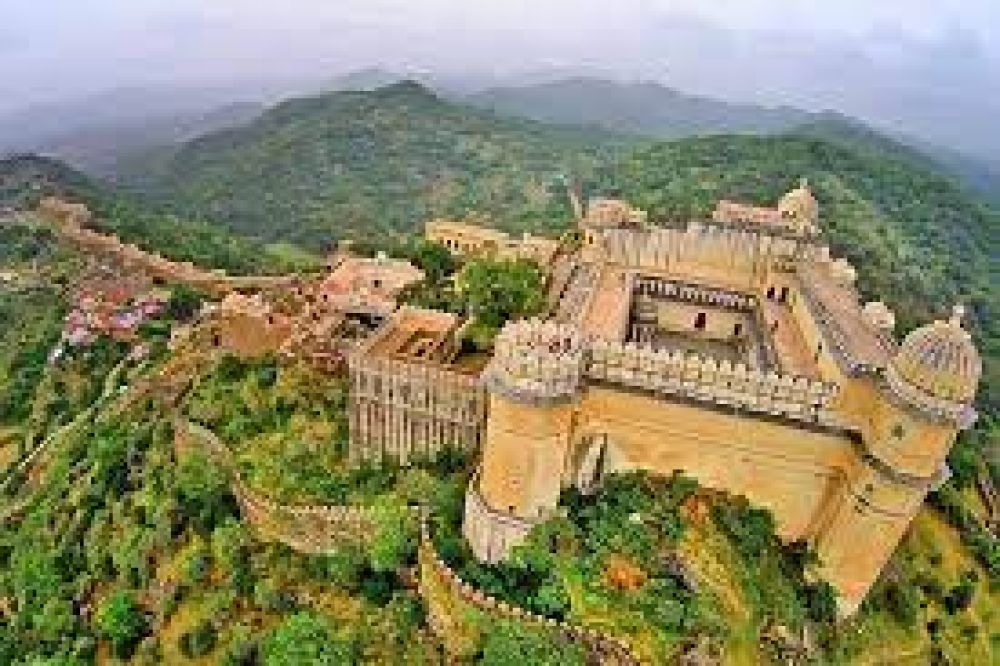

Located in the Rajsamand district of Rajasthan, India, the Kumbhalgarh Fort is a Mewar fortress on the westerly range of Aravalli Hills, built in the 15th century by Rana Kumbha. It is also the birthplace of Maharana Pratap, the great king, and warrior of Mewar. The fort's large perimeter walls extend over 36 kilometers, making it one of the longest in the world — second only to the Great Wall of China — and this is a point of immense pride for the local community.
The fort was considered invincible and served as a safe haven for the rulers of Mewar in times of strife. Its strategic position atop a 1,900-meter high hill provided natural defenses, making it only accessible through a zigzagging seven-gate route. Its history is steeped in tales of valor and resilience, drawing many history enthusiasts and patriotic visitors each year.
The history of tourism at Kumbhalgarh Fort can be traced back to the time when the region was largely unexplored by the outside world. The fort was more of a secluded fortress but gained prominence as tourism in Rajasthan flourished due to its rich culture, history, and architectural marvels.
With the fort being recognized as a UNESCO World Heritage Site in 2013 as part of the Hill Forts of Rajasthan, its appeal to international and domestic travelers alike significantly increased. Kumbhalgarh, since then, has become an essential stop on the Rajasthan tourism circuit, with its ramparts, gateways, temples, and palaces offering a deep dive into the history of Indian forts.
In recent years, the fortress has not only attracted historical tourism but has also become a popular venue for destination weddings and cultural events. The annual Kumbhalgarh Festival showcases local arts and crafts, dance, music, and is a massive draw for those looking to experience Rajasthani culture in its most vibrant form.
Tourism trends also show a rise in sustainable and experiential travel. Visitors are now more inclined towards responsible tourism that includes staying at eco-friendly resorts, participating in conservation efforts, and engaging in local community tours. The fort's management has also taken several steps to facilitate such experiences and contribute to preserving the environment and cultural heritage.
Adventure tourism is another trend on the rise, with activities like trekking, camping, and wildlife safaris in the nearby Kumbhalgarh Wildlife Sanctuary. This is drawing a younger demographic of travelers who are keen to combine historical exploration with adventure sports.
In conclusion, Kumbhalgarh Fort holds an esteemed place in Rajasthan's tourism landscape. Its storied past, combined with Rajasthan’s focused efforts on promoting heritage tourism, has made Kumbhalgarh a must-visit destination for travelers from across the globe.